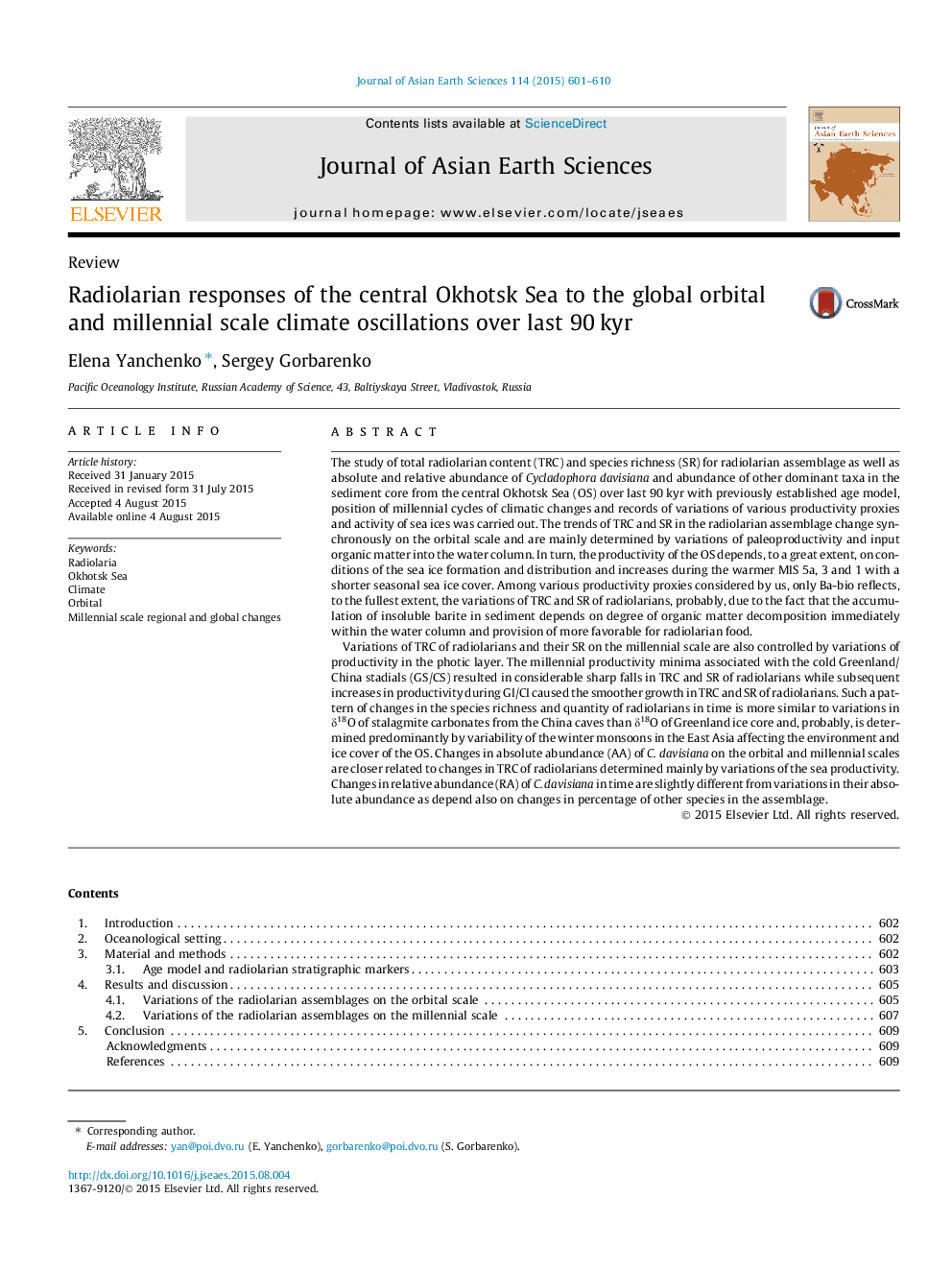| Article ID | Journal | Published Year | Pages | File Type |
|---|---|---|---|---|
| 4730165 | Journal of Asian Earth Sciences | 2015 | 10 Pages |
•Radiolarian absolute, species abundances (RAA, RSA) were studied in Okhotsk Sea core.•Orbital-millennial changes of RAA, RSA for last 90 ka were controlled by productivity.•Among several productivity proxies Ba-bio more adequately responds to RAA changes.•C. davisiana absolute abundance (AA) changes in time mostly follow to RAA variability.•Relative abundance of C. davisiana changes determined by their AA and other species.
The study of total radiolarian content (TRC) and species richness (SR) for radiolarian assemblage as well as absolute and relative abundance of Cycladophora davisiana and abundance of other dominant taxa in the sediment core from the central Okhotsk Sea (OS) over last 90 kyr with previously established age model, position of millennial cycles of climatic changes and records of variations of various productivity proxies and activity of sea ices was carried out. The trends of TRC and SR in the radiolarian assemblage change synchronously on the orbital scale and are mainly determined by variations of paleoproductivity and input organic matter into the water column. In turn, the productivity of the OS depends, to a great extent, on conditions of the sea ice formation and distribution and increases during the warmer MIS 5a, 3 and 1 with a shorter seasonal sea ice cover. Among various productivity proxies considered by us, only Ba-bio reflects, to the fullest extent, the variations of TRC and SR of radiolarians, probably, due to the fact that the accumulation of insoluble barite in sediment depends on degree of organic matter decomposition immediately within the water column and provision of more favorable for radiolarian food.Variations of TRC of radiolarians and their SR on the millennial scale are also controlled by variations of productivity in the photic layer. The millennial productivity minima associated with the cold Greenland/China stadials (GS/CS) resulted in considerable sharp falls in TRC and SR of radiolarians while subsequent increases in productivity during GI/CI caused the smoother growth in TRC and SR of radiolarians. Such a pattern of changes in the species richness and quantity of radiolarians in time is more similar to variations in δ18O of stalagmite carbonates from the China caves than δ18O of Greenland ice core and, probably, is determined predominantly by variability of the winter monsoons in the East Asia affecting the environment and ice cover of the OS. Changes in absolute abundance (AA) of C. davisiana on the orbital and millennial scales are closer related to changes in TRC of radiolarians determined mainly by variations of the sea productivity. Changes in relative abundance (RA) of C. davisiana in time are slightly different from variations in their absolute abundance as depend also on changes in percentage of other species in the assemblage.
